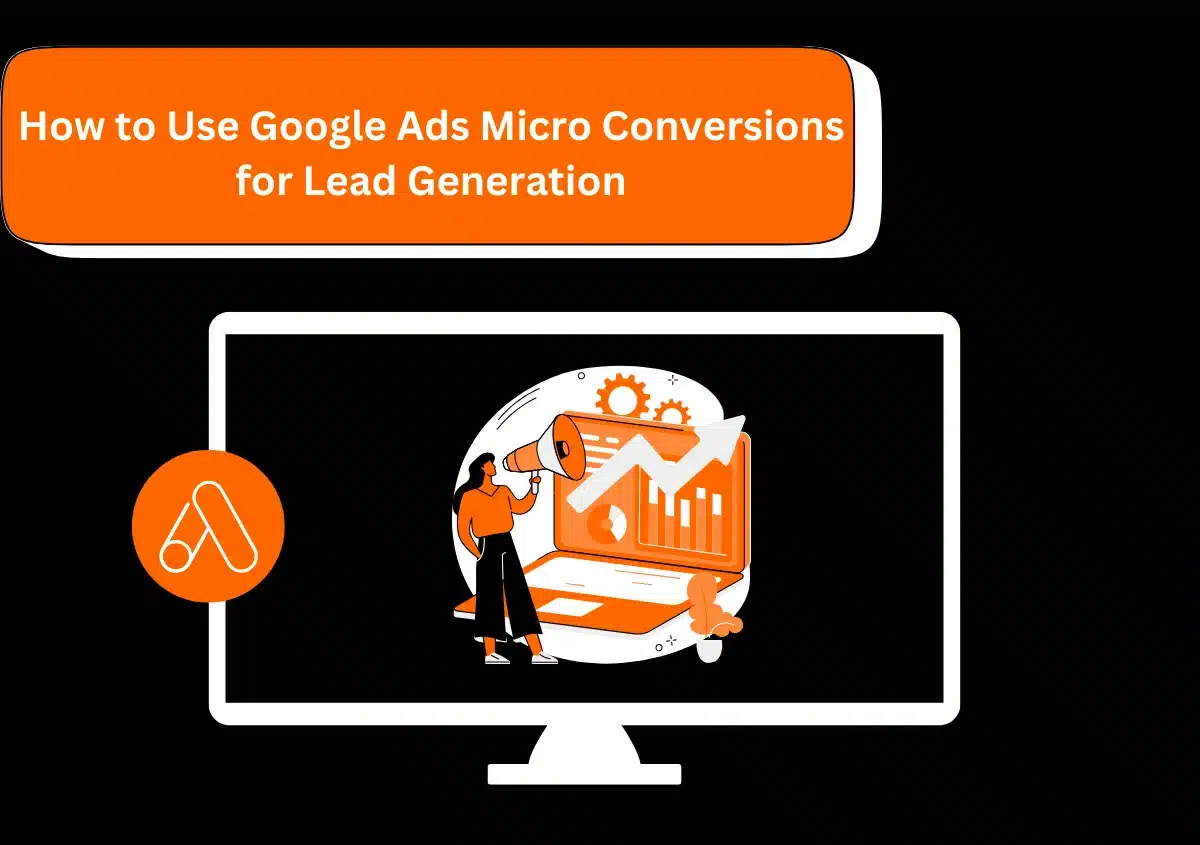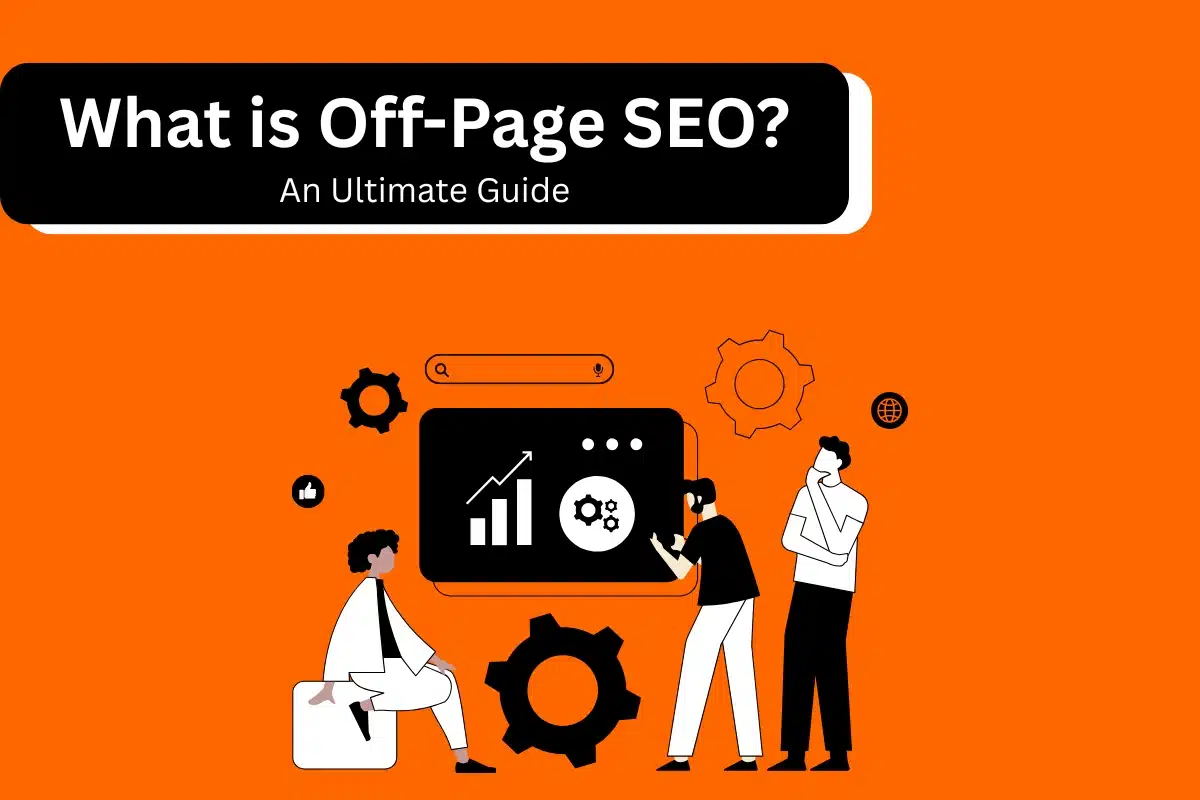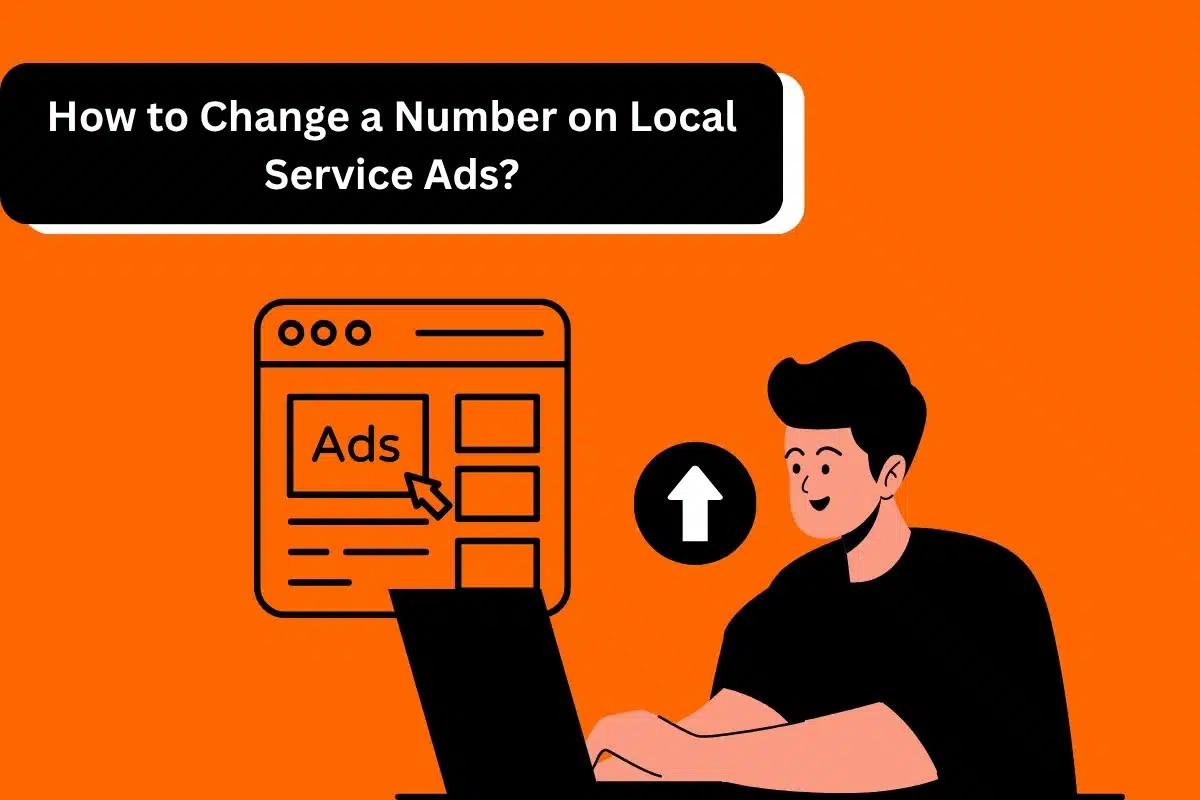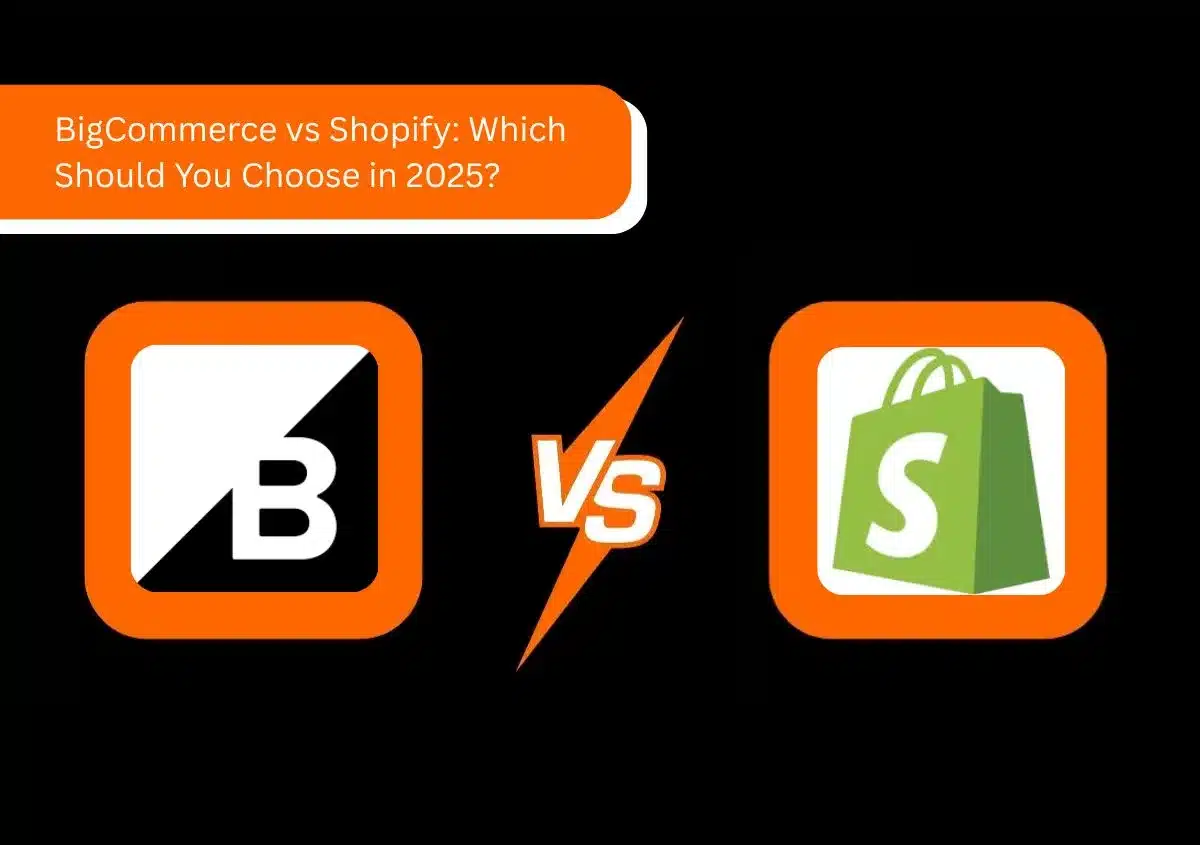Stumbled upon micro conversion ideas while searching for ways to improve your lead generation? Relax, you’ve arrived at the right place! Get set to discover micro conversions – the goldmine in digital marketing.
Think of the last time you browsed a new website. Maybe you signed up for a newsletter, watched a product video, or shared an article with a friend. These small actions, users often take before committing to a purchase, are what we call micro conversions—tiny steps toward a final sale.
In digital marketing, especially with Google Ads, these actions help nurture leads and reveal what your customer finds interesting. Micro conversions also indicate where potential customers are in their journey.
Track these mini-interactions and you can easily gather some valuable insights. Then use this info to bring in higher-quality leads. It’s as simple as that!
Ready to transform small actions into big results? Reach out to our Google Ads specialist to discover powerful micro-conversion ideas for lead generation!
What Are Google Ads Micro Conversions?
Micro conversions in Google Ads are small actions that show users are interested in your brand, even if they haven’t made a purchase yet. These actions don’t lead to an immediate sale but still give you valuable insights into engagement.
For example, someone might download a resource, watch a video, or spend a lot of time on a product page. While they’re not big purchases, these steps show that the user is moving closer to a decision.
Micro Conversions vs. Macro Conversions
Micro conversions are the small, trackable actions that potential customers have with your ads or website. These can be things like clicking a link, watching a video, or signing up for an email. While micro conversions don’t directly lead to a sale, they signal growing interest.
On the other hand, macro conversions are the big wins in a user’s journey. These are the actions that matter most to your business—actions like making a purchase or filling out a lead form. These high-value steps directly impact your business and help boost revenue.
Macro Conversion Examples
Some classic examples of macro conversions include:
- Completing a Purchase: When a customer buys something, it’s the ultimate goal. It shows that all the smaller steps, like browsing and adding items to the cart, finally paid off.
- Filling Out a Lead Form: This action shows strong interest in your brand. It means the user is ready to be contacted, which could probably lead to a sale.
- Subscribing to a Service: Whether it’s a membership or a paid subscription, this is a sign that the user sees value in your offer.
Micro Conversion Ideas for Lead Generation
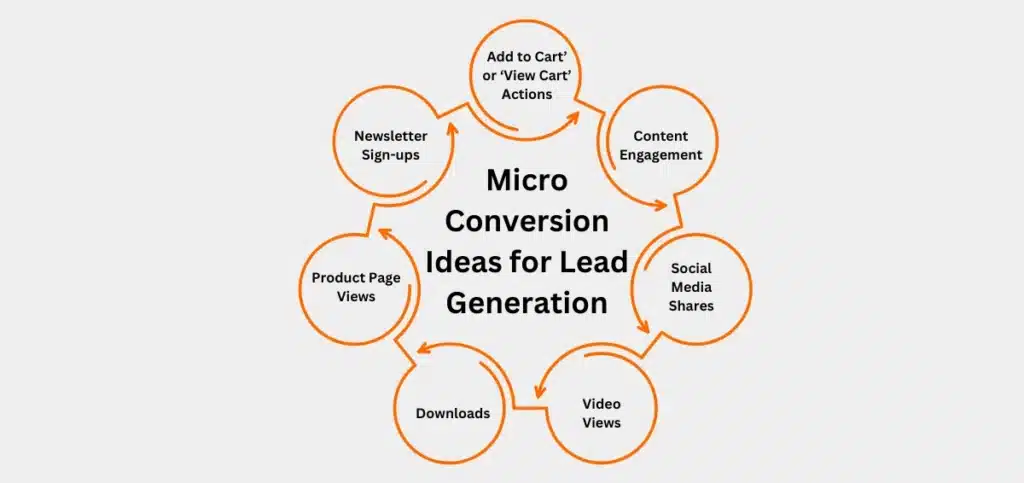
1. Newsletter Sign-ups
A newsletter sign-up is one of the best micro-conversion techniques to generate leads. When users have taken a step to stay connected, signals genuine interest in your brand and offers excellent opportunities to nurture leads.
Effective campaigns have visible pop-ups and banners to increase sign-ups. Make sure you highlight what value the newsletter offers—like exclusive insights or a discount on the first purchase. Consider offering an incentive, like a 10% discount to encourage more users to subscribe.
2. Product Page Views
When visitors spend time on your product pages, it clearly indicates they are interested in what you offer. Tracking these views is a great way to understand which products or services generate the most curiosity.
To drive more traffic to your web pages, ensure smooth site navigation with clear calls-to-action (CTAs). Optimize these pages for SEO, and link to them in campaigns across various channels. Make the features and benefits on product pages stand out to move users down the purchase funnel.
3. Downloads
Downloads suggest deeper engagement, especially when users voluntarily access these resources. When users download your whitepapers, guides, or case studies, it shows they’re interested in learning more.
To encourage downloads, ensure your lead pages are search engine friendly. Promote these resources in your blog posts or link them as CTAs.
4. Video Views
Video views, especially completed views, are good news! It reflects a solid engagement and interest in your brand story. Viewers who watch a video until the end are likely impressed by what your business has to offer.
To encourage more views, customize videos to each platform. For instance, shorter vertical videos work well on Instagram Stories, while longer formats fit better on YouTube. Use engaging visuals and test video length to match the viewer’s attention span on each platform.
5. Social Media Shares
This is one of the most popular micro-conversion tactics used for lead generation. When visitors share your content on social media, it amplifies your brand to a wider audience and increases your credibility.
To make it easier for users to spread the word, add prominent social sharing buttons on every blog post, product page, and visual content. Or you could add a CTA at the end of the content, inviting readers to share the post with friends or colleagues.
6. Content Engagement
Any engagement such as comments, likes, or time spent on the page, indicates that your content is valuable and engaging. Include prompts like ‘Let us know your thoughts’ or ‘Have questions? We’re here to help at the end of your posts to encourage engagement.
And of course, make sure you respond to comments. Interacting with users helps build a stronger connection, increasing the chances of re-visits and conversions.
7. ‘Add to Cart’ or ‘View Cart’ Actions
Even if a visitor doesn’t complete a purchase, actions like ‘add to cart’ and ‘view cart’ show a clear intention to buy. These steps will help you understand where people are in their decision-making process and what may be holding them back.
For example, if you notice frequent cart abandonment, high shipping fees might be the culprit. Simplify the checkout process or offer incentives like free shipping to move customers closer to conversion.
Why Micro Conversions Matter for Lead Generation?
Micro conversions track the smaller actions users take on their way to a major goal, like a purchase. Focusing on these steps offers businesses multiple advantages that include:
- Ability to create ad strategies that align with user expectations
- Insights to build stronger lead-generation campaigns
- Ideas to fine-tune messaging, targeting, and engagement
Looking to get the most out of your Google Ads? Our Google ads agency can help track these micro conversions to boost your lead generation results.
How To Approach Lead Generation and Conversion Using Google Ads?
1. Understand the Full Buyer Journey
Mapping out micro conversions along the buyer’s journey helps you see where leads are most engaged. Are the leads strongest during early interest or later stages of deeper consideration? Each step reveals new opportunities to engage with your audience using the right ad content.
For example, if someone downloads a product guide, they may be ready to view a retargeted ad featuring customer testimonials. Tracking these small steps lets you understand what keeps leads interested and moves them closer to conversion.
2. Combine Macro and Micro Conversions
Using both micro and macro conversions gives you a more comprehensive view of ad performance. While macro conversions show your big wins—like a sale or sign-up—micro conversions track the smaller actions that lead there and user behaviors along the way.
Together, these metrics let you design campaigns that connect with potential customers at every stage.
3. Integrate with Google Analytics
Pairing Google Ads with Google Analytics works great for lead generation. This technique provides detailed insights into which micro conversions have the most impact on your macro conversions.
The combined view helps you refine your targeting, bidding, and messaging.
No idea how to set this up? Our Google Ads Management Services can help optimize your campaigns.
How to Track Micro Conversions?
Here are three methods to track micro conversions.
1. Set Up Tracking in Google Analytics
Google Analytics can track both online and offline conversions. Here’s a step-by-step guide on how to create a goal in Google Analytics and start tracking conversions:
Sign in to your Google Analytics account.
Click on ‘Admin’ in the left-hand menu.
Choose the ‘View’ where you want to add the goal.
Select ‘Goals’ in the View column, then click on ‘+New Goal’.
Name your goal and pick the goal type. You’ll see four options:
Destination (tracking visits to a specific URL)
Duration (tracking time spent on the site)
Pages/Screens per session (tracking how many pages or screens a user views)
Event (tracking specific interactions like video views or downloads)
For tracking conversions, Destination or Event are often best. Here’s how to set them up:
- For a Destination goal, enter the URL of your ‘thank you’ page, which appears after a conversion.
- For an Event goal, configure Category, Action, and Label to define what you’re tracking, like a form submission or video play.
Once you’ve selected and set up the goal, click ‘Save’. Your goal is now ready, and Google Analytics will begin tracking conversions!
To monitor your results, go to the Conversions report in Google Analytics. This report shows how many conversions each campaign generated and your overall conversion rate.
2. Monitor These Metrics
To measure the effectiveness of your micro conversions, keep an eye on key metrics like CTR and CRO.
Click-Through Rate (CTR) shows how many people are interested enough to engage with your ad. On the other hand, Conversion Rate Optimization (CRO) reveals which micro conversions are most likely to lead to larger actions, like a purchase or sign-up.
By regularly monitoring these metrics, you’ll gain insights into where your campaign is connecting with potential leads and where adjustments may be needed. This helps you refine your strategy and strengthen actions leading towards your ultimate goals.
3. Try These Tools and Technologies
Tools like Google Tag Manager and Google Analytics can simplify and enhance your micro-conversion tracking.
Google Tag Manager allows you to set up tracking tags for specific micro conversions. Since you can do this without altering your website’s code, it is an easier option to monitor key actions. Google Analytics provides in-depth insights into user behavior. It shows you which interactions drive the most engagement.
Together, these tools ensure that you do not miss any valuable micro conversion. Try these tools to spot trends and make data-driven adjustments to improve your ad campaigns.
If all this seems too complex, remember that our Google ads expert is just a click away. Contact us now to track your micro conversions and empower your ad campaigns.
Benefits of Using Micro Conversion for Lead Generation
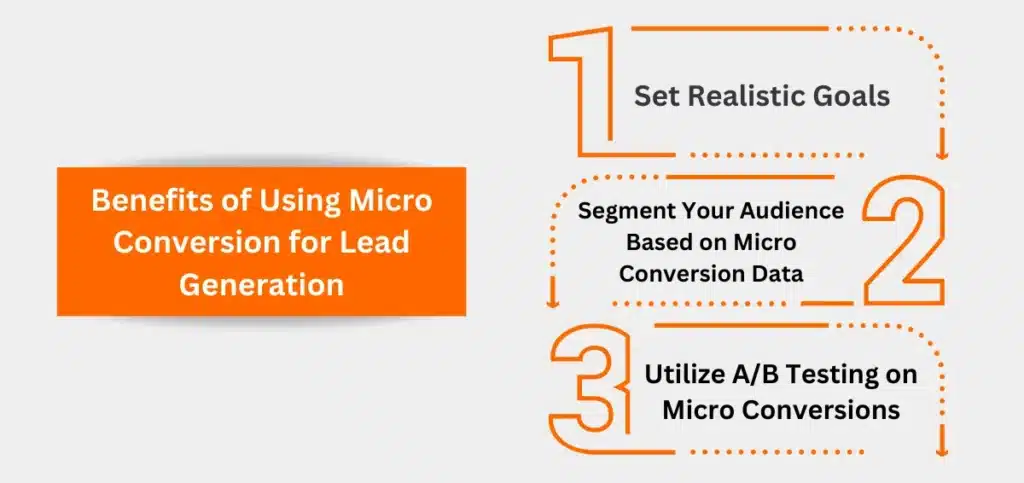
1. Enhanced Audience Insights
Tracking micro conversions gives you a closer look at how users interact with your site. It gives you an insightful peek into behavior patterns.
By understanding what users engage with—like watching a video, downloading a resource, or browsing certain product pages—you get a clear idea of what resonates most with your audience. This information allows you to fine-tune your campaigns and create ads that are more relevant and appealing.
The result? You get ads that connect better with your audience and stand better chances of converting.
2. Improved Campaign Efficiency
Micro conversions help you manage your ad budget by pinpointing which interactions are leading users toward a final conversion.
For instance, if a micro-conversion like a newsletter sign-up is connected to high conversion rates, you can allocate more of your ad spend for similar actions. With such a data-driven approach, your campaigns become more efficient.
More importantly, it will help you focus on touchpoints that are most likely to convert prospects into loyal customers. And no more unnecessary spending!
3. Better Quality of Leads
When users engage with specific actions—like filling out a form, watching a product video, or visiting high-intent pages—they indicate genuine interest.
This process naturally filters out less-engaged users and highlights prospects who are more likely to convert. With a pool of higher-quality leads, your sales team can focus on the most promising prospects.
Eventually, this makes the entire lead generation process more productive and rewarding for your business.
Read Also: Google Ads Google Tag Manager Conversion Tracking Not Reporting
Best Strategies for Using Google Ads Micro Conversions
1. Set Realistic Goals
Start with clear, achievable goals for each micro-conversion to keep campaigns focused and measurable.
Think about smaller actions, like newsletter sign-ups or time spent on a product page, that indicate genuine interest from your audience. Setting benchmarks allows you to see how well these steps contribute to your lead-generation efforts. It also becomes easier to adjust strategies for better results.
Realistic goals ensure every micro conversion builds toward larger objectives that align with your business targets.
2. Segment Your Audience Based on Micro Conversion Data
Insights into different audience behaviors make it easier to segment users based on their engagement levels.
For example, visitors who download a product guide might be more interested in specific product details than those who just visit your home page. Using this data, you can create targeted ads that speak directly to each group’s unique interests.
By customizing your messaging to different audience segments, you increase relevance and create a positive setting for lead generation.
3. Utilize A/B Testing on Micro Conversions
A/B testing micro conversions is a powerful way to determine which elements of your ads resonate best with your audience.
For instance, you might test different CTAs, images, or ad copy to see which options drive more downloads or video views. Through continuous testing, you can refine each part of your campaign to boost engagement at every stage.
We have the best A/B testing experts in our PPC marketing agency. Reach out today to harness the power of micro conversions for lead generation.
Creative Micro Conversion Ideas for Niche Industries
To reach niche audiences, think outside the box and adapt your lead generation strategies to match unique industry needs. Creative campaigns make a splash when they match audience behaviors, preferences, and challenges unique to your market.
For example, using personalized content and exclusive offers can attract hard-to-reach groups. Here are three more ideas to ensure your message hits home:
1. Create Custom Landing Pages and Content Downloads
Tailored landing pages and exclusive content downloads, like whitepapers or industry-specific guides, work well for niche audiences.
Thanks to these resources, users view your brand as a helpful guide. The immediate value you offer results in higher-quality leads.
Let’s consider a successful example of an IT company that offers specialized software. They used a downloadable industry trend report to attract decision-makers. See? Sometimes, it can be as simple as communicating new facts to your customers in an engaging way.
2. Encourage Event and Webinars Sign-Ups
Promoting niche events, like webinars or workshops, motivates engagement through micro conversions.
These sign-ups give insights into the interests of your potential customers. That provides you with a great starting point to create follow-up messages that align with their expectations.
3. Launch Referral and Loyalty Programs
Loyalty and referral programs work well in building a network of engaged users in niche markets.
Simple actions, like sign-ups or sharing content, can trigger these programs. Such actions strengthen loyalty while expanding your reach to a broader audience base.
Consult our PPC Specialist for more ideas on designing creative solutions for your niche market.
Challenges in Using Micro Conversions (and Its Solutions Too!)
Implementing micro-conversion strategies can be challenging. But knowing what to expect can make a big difference.
Challenge 1: One common issue is identifying which micro conversions to track. With so many small actions to choose from, businesses may feel overwhelmed.
Solution: A good solution is to start with a few core actions—like clicks on a product page—that indicate interest in your offerings. Once you see results, you can expand tracking to other actions.
Challenge 2: Another challenge is gathering enough data to see meaningful trends. Micro conversions don’t always yield instant results, so it’s essential to be patient and focus on long-term patterns.
Solution: Regularly testing different strategies and measuring results over time will help refine your approach. Even small changes, like tweaking ad copy or updating landing page content, can have a noticeable impact.
Challenge 3: Businesses are often unaware of how to adjust ad spending based on micro-conversion data.
Solution: Start small by reallocating the budget to campaigns or actions showing the most promise, and test as you go. With a mix of patience and continuous testing, micro conversions can reveal powerful insights to strengthen your lead generation.
Facing challenges with implementing micro conversion data? Don’t hesitate to reach out for support. Our PPC agency can help you get the most from micro conversions.
Read Also: What are Product Listing Ads & How to Use Them?
Micro Conversions—Steering the Future of Lead Generation
Adding micro conversions into your lead generation strategy can be a smart move. These small steps give you real insight into what makes your audience tick, helping you create ads that really connect.
As digital marketing keeps evolving, these little actions are becoming even more valuable for guiding potential customers toward that final sale.
Looking ahead, you may expect even better tools to help track these small engagements and see what’s working best. With micro conversions, you’re not just gathering leads—you’re building real connections and setting the stage for long-term growth.
Want to see how micro conversions can boost your own campaigns? Reach out to us today, and let’s start turning those small actions into big results!

